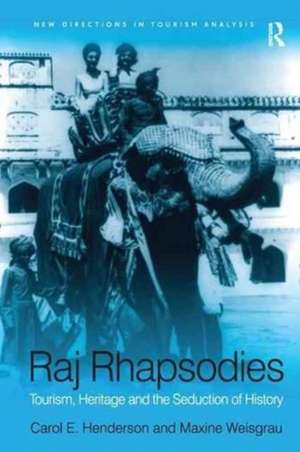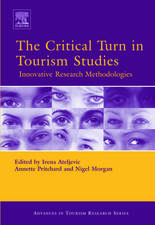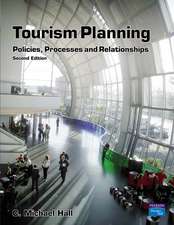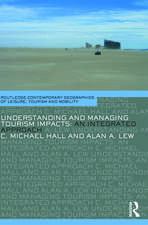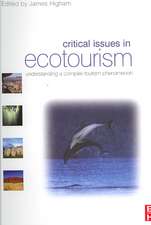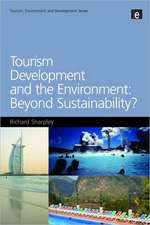Raj Rhapsodies: Tourism, Heritage and the Seduction of History
Editat de Maxine Weisgrau, Carol Hendersonen Limba Engleză Paperback – 28 noi 2016
| Toate formatele și edițiile | Preț | Express |
|---|---|---|
| Paperback (1) | 465.91 lei 6-8 săpt. | |
| Taylor & Francis – 28 noi 2016 | 465.91 lei 6-8 săpt. | |
| Hardback (1) | 1050.09 lei 6-8 săpt. | |
| Taylor & Francis – 28 mai 2007 | 1050.09 lei 6-8 săpt. |
Preț: 465.91 lei
Nou
Puncte Express: 699
Preț estimativ în valută:
89.22€ • 91.93$ • 74.87£
89.22€ • 91.93$ • 74.87£
Carte tipărită la comandă
Livrare economică 22 februarie-08 martie
Preluare comenzi: 021 569.72.76
Specificații
ISBN-13: 9781138276338
ISBN-10: 1138276332
Pagini: 282
Dimensiuni: 156 x 234 x 15 mm
Greutate: 0.45 kg
Ediția:1
Editura: Taylor & Francis
Colecția Routledge
Locul publicării:Oxford, United Kingdom
ISBN-10: 1138276332
Pagini: 282
Dimensiuni: 156 x 234 x 15 mm
Greutate: 0.45 kg
Ediția:1
Editura: Taylor & Francis
Colecția Routledge
Locul publicării:Oxford, United Kingdom
Notă biografică
Dr Carol Henderson is a Affiliated Faculty Member, Department of Sociology and Anthropology, Rutgers University-Newark- The State University of New Jersey, USA. Dr Maxine Weisgrau is a Term Associate Professor, Department of Anthropology, Barnard College/Columbia University, USA.
Recenzii
’These studies of tourism to Rajasthan raise our understanding of the phenomenon to a new level. They reach beyond the issues of cultural and mass tourism and their impact. The authors show how complex and contingent tourism practices and representations are not only for the outside tourists (most of them now Indians), but from the point of view of Rajasthanis themselves. These essays, taken together, also provide as interesting a snapshot of the diverse and overlapping changes taking place in India today as one could hope to find.’ Ronald Inden, University of Chicago, USA '...Raj Rhapsodies is a timely addition to studies on India and Rajasthan. After Edensor’s work on the Taj, it is the first project that attempts a scholarly examination of tourism at an Indian site, and will help in bringing tourism as a category of study into the fields of art history, urban planning, architecture, and religious studies particularly in the South Asian context.' H-Travel 'This is an interesting book that provides a useful contribution to the field of tourism studies in general and, more specifically, to current debates on tourism, heritage and culture. In particular, it addresses the ways in which Rajasthan is promoted, re-presented, and experienced for, and by, tourists.' Cultural Geography
Cuprins
Introduction, Carol E.Henderson, MaxineWeisgrau; Part 1 Creating Tourism Narratives of Heritage Across Space and Time; Chapter 101 Introduction to Part 1, Carol E.Henderson, MaxineWeisgrau; Chapter 1 Shifting Terrains of Heritage, AnneHardgrove; Chapter 2 Ghost Towns and Bustling Cities, ElenaKaratchkova; Chapter 3 Travel, History, Politics and Heritage, JasonFreitag; Chapter 4 Virtual Rajasthan, Carol E.Henderson; part02 Tourism, Transgression and Shifting Uses of Social Capital; Chapter 102 Introduction to Part 2, Carol E.Henderson, MaxineWeisgrau; Chapter 5 Exclusion and Election in Udaipur Urban Space, NicolasBautès; Chapter 6 Names, but not Homes, of Stone, Jeffrey G.Snodgrass; Chapter 7 Sickly Men and Voracious Women, MaxineWeisgrau; Chapter 8 From Privy Purse to Global Purse, JayasinhjiJhala; part03 Tourism and Spiritual Spaces; Chapter 103 Introduction to Part 3, Carol E.Henderson, MaxineWeisgrau; Chapter 9 Devotees, Families and Tourists, John E.Cort; Chapter 10 Tourists, Pilgrims and Saints, UshaSanyal; Chapter 11 Hindu Nationalism, Community Rhetoric and the Impact of Tourism, Christina A.Joseph; part04 Conclusions; Chapter 12 Composing the Raj Rhapsodies, Carol E.Henderson and Maxine Weisgrau;
Descriere
With heritage a prized commodity in the marketing of tourism destinations, particular aspects of culture and history are often more actively promoted than others. This fascinating book explores the cultural politics of tourism through interdisciplinary perspectives, demonstrating that tourism heritage privileges elite histories that affect non-elites even as they advance their own visions of history.
